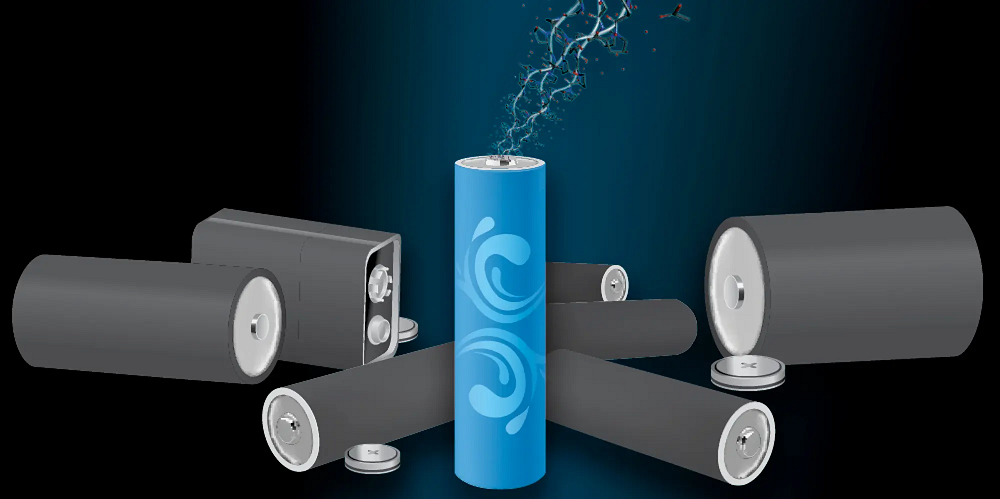
Battery technology continues to advance by leaps and bounds. The latest trend is water and hydrogen batteries that last longer and cost less.
The search for longer lasting, higher power, less expensive batteries is ongoing in laboratories around the world. The lithium-ion battery is a marvelous thing, but it takes too long to charge, its energy density is too low, and it is prone to catching fire. As if that weren’t enough, it also relies on raw materials the world simply doesn’t have enough of, if you believe Carlos Tavares, the CEO of Stellantis.
Most of us know just enough about batteries to talk about them in general terms — there’s NMC and LFP, for instance — but in the world’s laboratories, batteries are being made using all sorts of different materials. At Texas A&M, researchers are exploring the use of water based electrodes that would eliminate the need for cobalt and lithium — two materials that are currently obtained primarily from sources outside the US.
The Water-Based Battery
Texas A&M chemical engineering professor Jodie Lutkenhaus and chemistry assistant professor Daniel Tabor have published their findings about lithium-free batteries in Nature Materials in an article with this catchy title: “The role of the electrolyte in non-conjugated radical polymers for metal-free aqueous energy storage electrodes.”
In the abstract, the researchers say,”Redox-active non-conjugated radical polymers are promising candidates for metal-free aqueous batteries because of the polymers’ high discharge voltage and fast redox kinetics. However, little is known regarding the energy storage mechanism of these polymers in an aqueous environment. The reaction itself is complex and difficult to resolve because of the simultaneous transfer of electrons, ions and water molecules….Surprisingly, the capacity can vary by as much as 1,000% depending on the electrolyte, in which certain ions enable better kinetics, higher capacity and higher cycling stability.”
In a Texas A&M blog post, Lutkenhaus said, “There would be no battery fires anymore because it’s water-based. In the future, if materials shortages are projected, the price of lithium ion batteries will go way up. If we have this alternative battery, we can turn to this chemistry, where the supply is much more stable because we can manufacture them here in the United States and materials to make them are here.”
She explained that aqueous batteries consist of a cathode, electrolyte, and an anode. The cathodes and anodes are polymers that can store energy, and the electrolyte is water mixed with organic salts. The electrolyte is key to ion conduction and energy storage through its interactions with the electrode. “If an electrode swells too much during cycling, then it can’t conduct electrons very well, and you lose all the performance. I believe there is a 1,000% difference in energy storage capacity, depending on the electrolyte choice because of swelling effects.”
According to their article, redox-active, non-conjugated radical polymers (electrodes) are promising candidates for metal-free aqueous batteries because of the polymers’ high discharge voltage and fast redox kinetics. The reaction is complex and difficult to resolve because of the simultaneous transfer of electrons, ions and water molecules.
“Theory and experiment often work closely together to understand these materials. One of the new things that we do computationally in this paper is that we actually charge up the electrode to multiple states of charge and see how the surroundings respond to this charging,” Tabor said.
“We would like to expand our simulations to future systems. We needed to have our theory confirmed of what are the forces that are driving that kind of injection of water and solvent,” he added. “With this new energy storage technology, this is a push forward to lithium free batteries. We have a better molecular level picture of what makes some battery electrodes work better than others, and this gives us strong evidence of where to go forward in materials design.”
The Hydrogen-Based Battery
Last October, we told our readers about EnerVenue, a company that manufacturers a nickel hydrogen battery with an extremely long lifespan of 30 years. They are not intended for automotive use but instead are optimized for energy storage purposes. The company offers battery storage developers a unique advantage. The company guarantees its batteries will have no more than a 12% reduction in energy storage capacity for 20 years. The design life for the EnerVenue battery is 30 years and 30,000 charge/discharge cycles.
On March 28, the company announced it will construct a new 1 million square foot factory in Shelby County, Kentucky, which is located just east of Louisville. The first phase of the project will provide one gigawatt-hour of annual production. EnerVenue expects to invest in excess of $1 billion to expand to more than 20 gigawatt-hours per year across its domestic manufacturing sites in subsequent phases.
“Locating EnerVenue’s gigafactory in Kentucky is a win for the commonwealth,” said Governor Andy Beshear. “Our leadership has prioritized bringing high quality jobs to the region and this is yet another example of those efforts paying dividends.”
The new factory is expected to create 450 full time jobs during the first phase of its production ramp. Shelby County offered EnerVenue a generous long term incentive package comprising property and wage tax rebates totaling $20 million over a 25-year period, which is commensurate with the company’s significant local investment. The state of Kentucky also offered EnerVenue more than $10.3 million in tax incentives for the first phase of the company’s ramp. The tax rebates will help support growth in the county and incentivize future development as the gigafactory expands and adds additional jobs.
EnerVenue says it continues to see accelerating demand for its safe, durable, and versatile clean energy storage devices. It presently has commitments more than 7 GWh of capacity.
“As customer interest in EnerVenue’s storage technology soars, we’re excited to significantly scale battery production with our new state-of-the-art gigafactory in Shelby County,” said Jorg Heinemann, the CEO of EnerVenue. “Following a nationwide vetting process, Kentucky emerged as the ideal fit to build our new facility. The state and county governments were committed to bringing manufacturing and clean energy jobs to the region, and we look forward to working with them as we build out operations.” The new factory is expected to begin production by the end of this year.
EnerVenue recently launched the second generation of its large format battery technology — which it calls Energy Storage Vessels — that enable more scalable and customizable configurations. The company backs its products with a Capacity Assurance guarantee that offers customers a straightforward 20 year/20,000 cycle extended warranty that promises the devices will retain 88% or more of their rated capacity during the warranty period.
“For years, the stationary storage market has been asking for a simple, long term capacity guarantee,” says Randy Selesky, chief revenue officer for EnerVenue. “Capacity Assurance delivers an industry best promise that complements EnerVenue’s robust technology and provides our partners with both op’serational confidence and contractual security.”
The Takeaway
Here’s a CleanTechnica prediction straight from the C Suite on the top floor of our glass and chromium office tower. Within 10 years, the lithium-ion battery as we know it will have become a relic, suitable only for a display at the Smithsonian. We can’t say for sure what battery technologies will be in use by then, but our grandkids will stare in wide-eyed wonder when we tell them we used to need 40 minutes to recharge our electric cars and that battery prices used to be in the hundreds of dollars per kWh.
Will water batteries or hydrogen batteries be part of that future? Don’t bet against it.














